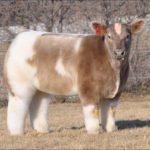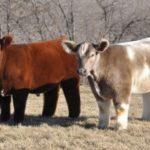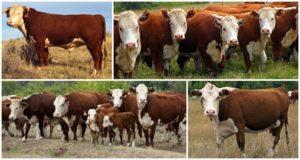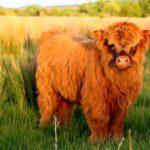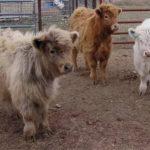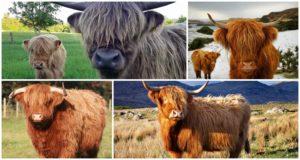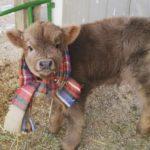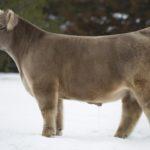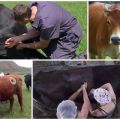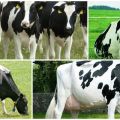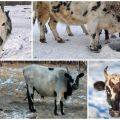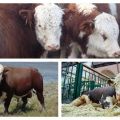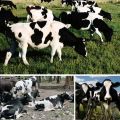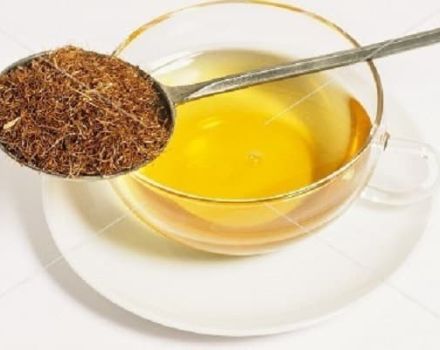Description and characteristics of the breed of fluffy cows, history and content
Among cattle, it's hard to find more adorable animals than fluffy little cows. Plush pets are bred exclusively for the delight of the soul and eyes. Cows do not produce milk, and using animals as a source of meat is unprofitable, since the minimum cost of one calf is 6 thousand dollars. Despite the sky-high prices, cows are popular.
Origin
The wonderful plush cows owe their appearance to the farmer Matt Lottner from Iowa. Small, like toys, animals became famous in 2011. At the time, the enterprising farmer posted pictures of the pets on the Internet. The woolen beauties, bred by Matt Lottner, instantly captured the hearts of animal lovers, but the real popularity came to them in 2013, after participating in the annual farm animal fair.
Evil tongues argue that the plush miracle has nothing to do with breeding work. Detractors believe that the appearance of cows is achieved by the original technique of shearing and styling pet hair.
Appearance
This shaggy, "toy" cow cannot boast of impressive size. The tallest representatives of the fluffy family can hardly reach 135 cm at the withers. Despite the modest parameters, the weight of the animal differs little from the weight of ordinary cows. The weight of the plush heifer is 500 kg, the bull is gaining 750-800 kg.

Hairy pets have a number of distinctive features:
- As befits plush creatures, the animal has no horns. This feature emphasizes the decorative appearance of the pet.
- An elegant cow coat is painted in a milky, red, brownish-beige, black or reddish shade.
- The coat is soft, straight. The quality of the vegetation is often compared to the wool of an alpaca.
- A wide, powerful back, rounded sides, a short neck and a small head give the animal's body the appearance of a massive rectangle.
- The pet's gorgeous body is supported by straight short legs. Dense, fluffy vegetation covers the entire surface of the animal's body from crown to hooves. Due to the total overgrowth, the limbs of the cows look like shaggy, neat posts.
- The udder of the cow is very poorly developed. The organ is only suitable for feeding the calf.
- The tail of a funny animal is evenly covered with soft hair.A tassel is formed at the end of the tail.
Characteristic
Despite the fact that long-haired cows of the Highland, Dutch, Red Steppe breeds existed before, plush cows differ from their relatives. The decorative animal is covered with soft wool entirely, which gives the pet the appearance of a neat volumetric rectangle. The breed was bred to draw attention to farm products and decorate the estate.
Unfortunately, the spectacular appearance of the animal does not last long. Already after the cow reaches the age of 1 year, the structure of the pet's coat does not change for the better. The vegetation of the horned beauty loses its softness and silkiness, the animal turns into an overweight, shaggy creature. The cow remains overgrown, and with good care the animal's appearance remains quite attractive, but the pet is not suitable for participation in exhibitions. Due to its docile nature, the plush cow will delight adults and children for many years.
Animals mature late. Bulls reach their maximum weight only by 2.5 years. Heifers are ready to reproduce by 38 months. The long period of development of animals is fully compensated by the duration of the reproductive age. Cows can breed for 18 years.
Pros and cons
Toy cows do not leave anyone indifferent, but getting yourself a cute animal is not so easy. You need to make a decision only after weighing all the pros and cons of the breed.
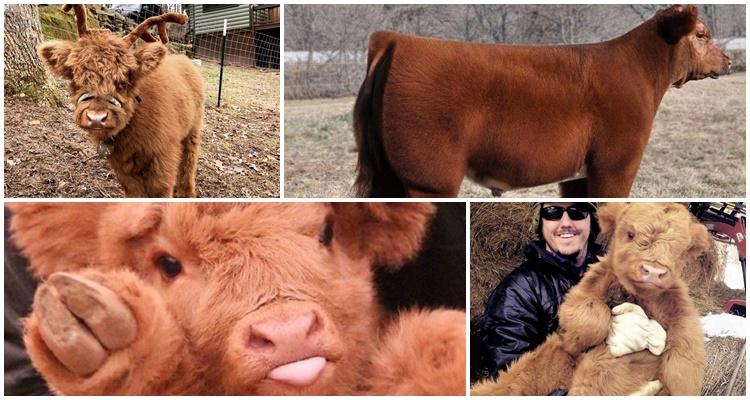
The intricacies of keeping plush cows
Fluffy beauties are kept in a clean, dry, warm room. In warm weather they are released to a separate pasture. To maintain good physical shape, pets need regular exercise.
Cow lifestyle
Usually, cows are bathed at least 1 time per week. During the procedure, be sure to use special zoo shampoos and balms. Wool is dried only with a hair dryer. Otherwise, the cow's hair will fall off and lose its attractiveness. To give a pet's fur coat a plush look, the fur must be cut regularly. For the procedure, use special scissors, combs, brushes, combs and a scraper. Masks are made for grooming 1-2 times a week. The product contains natural oils.
Nutrition
The quality of the hairline of pets, first of all, depends on a properly formulated diet. The required amount of nutrients, vitamins and minerals is added to the feed of the burenka.
Most of the cow's diet consists of ordinary plant food, however, to fully saturate the pet with the necessary substances, the cow is given granular, dry food. In summer, 60% of the daily ration is fresh grass, in winter - hay. The rest comes from bone meal, mineral and vitamin supplements.
On average, the daily diet of an adult pet consists of: 8 kg of grass, 4 kg of hay or straw, 5 kg of cereals, 4 kg of root crops, 2 kg of bran, 1.5 kg of concentrates, 1 kg of cake, 1 kg of bone meal.
Care before the show
Before the responsible display at the exhibition, the pet is washed daily. Each time the cow's wool is treated with balsams, special lotions. Healing oils are rubbed into the skin. For drying, a hair dryer with a hair straightening function and equipment providing a continuous flow of warm air are used. The strands are styled using special sprays and varnish. For more effect, experienced breeders use a neoprene wrap. These products give the animal's fur coat a special shine and silkiness. If necessary, the pet's hair is tinted.

Breeding rules and perspectives
For breeding, healthy, developed individuals are used. Heifers are ready for pregnancy and childbirth only after reaching 38 months. During gestation, the cow is fed with granular grains. Concentrated feed should be composed of soy, cassava, beetroot, bran and brewer's yeast. When feeding offspring, special dry mixtures are added to the mother's milk.
Fluffy cows cannot be used as a source of milk or meat, so they are not of practical interest to ordinary livestock breeders. However, the demand and high cost of animals makes us look at the cows in a different way. The price of prize winners of special exhibitions reaches 55-65 thousand dollars, so plush calves may well become sources of well-being.
The money and effort involved in breeding fluffy cows is enormous, but with a serious approach to business, they will certainly pay off. It should be noted that it is very difficult to acquire fluffy cows nowadays. There is a ban on the sale of animals outside of the state.
Diseases and prevention
Like ordinary cows, plush cows sometimes get sick.
- Corolla phlegmon. The disease is inflammation of the hoof tissue. Trouble overtakes the pet as a result of injury to the hooves. When pathogenic microbes enter the wound, the tissues become inflamed and swollen. Treatment consists of applying alcohol compresses and washing the wound.
- Laminitis. The disease manifests itself in the accumulation and stagnation of blood and fluid in the affected tissues of the hoof. The animal limps, and later the sore spot takes the form of an open wound. The veterinarian cuts the sore hoof and flushes the lesions.
- Viral diarrhea. With delayed treatment, a dangerous disease threatens mass death of animals. The reason is a viral infection. As a result of the development of the disease, the intestines of the animal become inflamed. Treatment is performed by a veterinarian.

